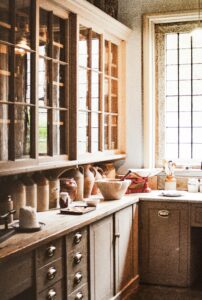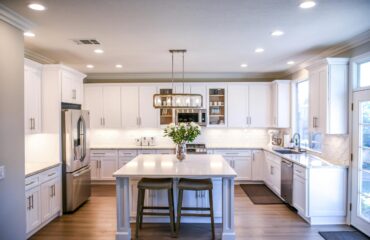Key Points on Kitchen Cabinets
Kitchen cabinets serve as both functional storage and aesthetic elements in a kitchen. They come in various styles, materials, and configurations to suit different preferences and needs. Here are some key points about kitchen cabinets:
- Materials: Cabinets can be made from wood, metal, laminate, or even glass. Each material has its own advantages in terms of durability, aesthetics, and cost.
- Styles: Common cabinet styles include traditional, modern, rustic, and transitional. Traditional cabinets often feature raised panels and intricate details, while modern cabinets tend to have sleek lines and minimalist designs.

- Configuration: Cabinets can be wall-mounted, base cabinets, tall cabinets, or specialty units like corner cabinets or pantry cabinets. The configuration depends on the layout and size of the kitchen, as well as the homeowner’s storage needs.
- Finishes: Cabinets can have various finishes, such as stained wood, painted, or laminated. The finish not only affects the appearance but also the durability and maintenance requirements of the cabinets.

- Hardware: Cabinet hardware includes handles, knobs, and pulls, which can add a decorative touch to the cabinets while also providing functional access.
- Storage Solutions: Inside the cabinets, there are often additional features like shelves, drawers, dividers, and organizers to maximize storage space and keep the contents organized.

- Customization: Many homeowners opt for custom cabinets to perfectly fit their kitchen layout and design preferences. Custom cabinets offer flexibility in terms of materials, sizes, and features.
- Installation: Proper installation is crucial for the functionality and longevity of kitchen cabinets. It’s often recommended to hire professionals for installation to ensure precise fitting and secure mounting.
When choosing kitchen cabinets, consider factors such as budget, style preferences, kitchen layout, and storage needs to find the best option for your space.


